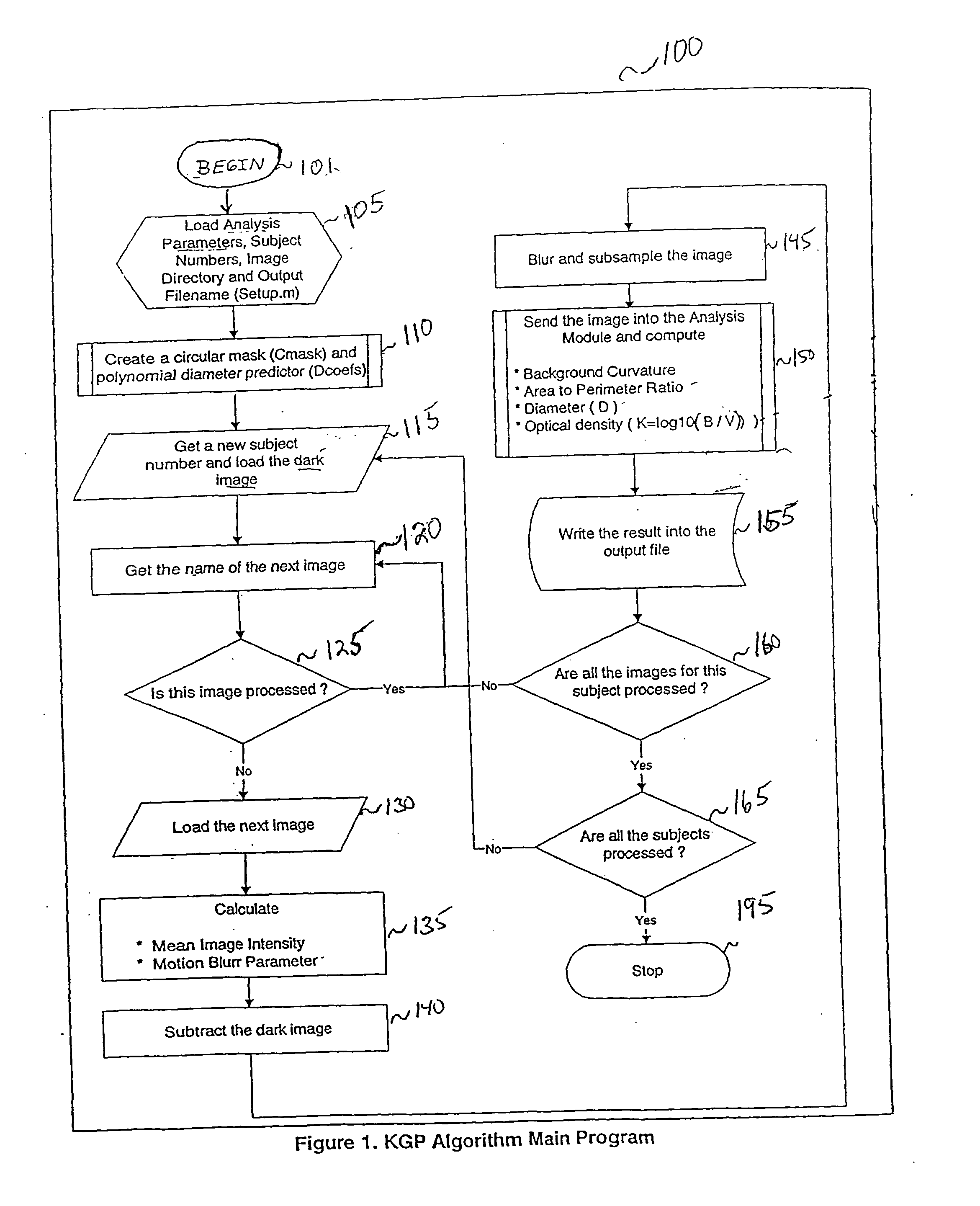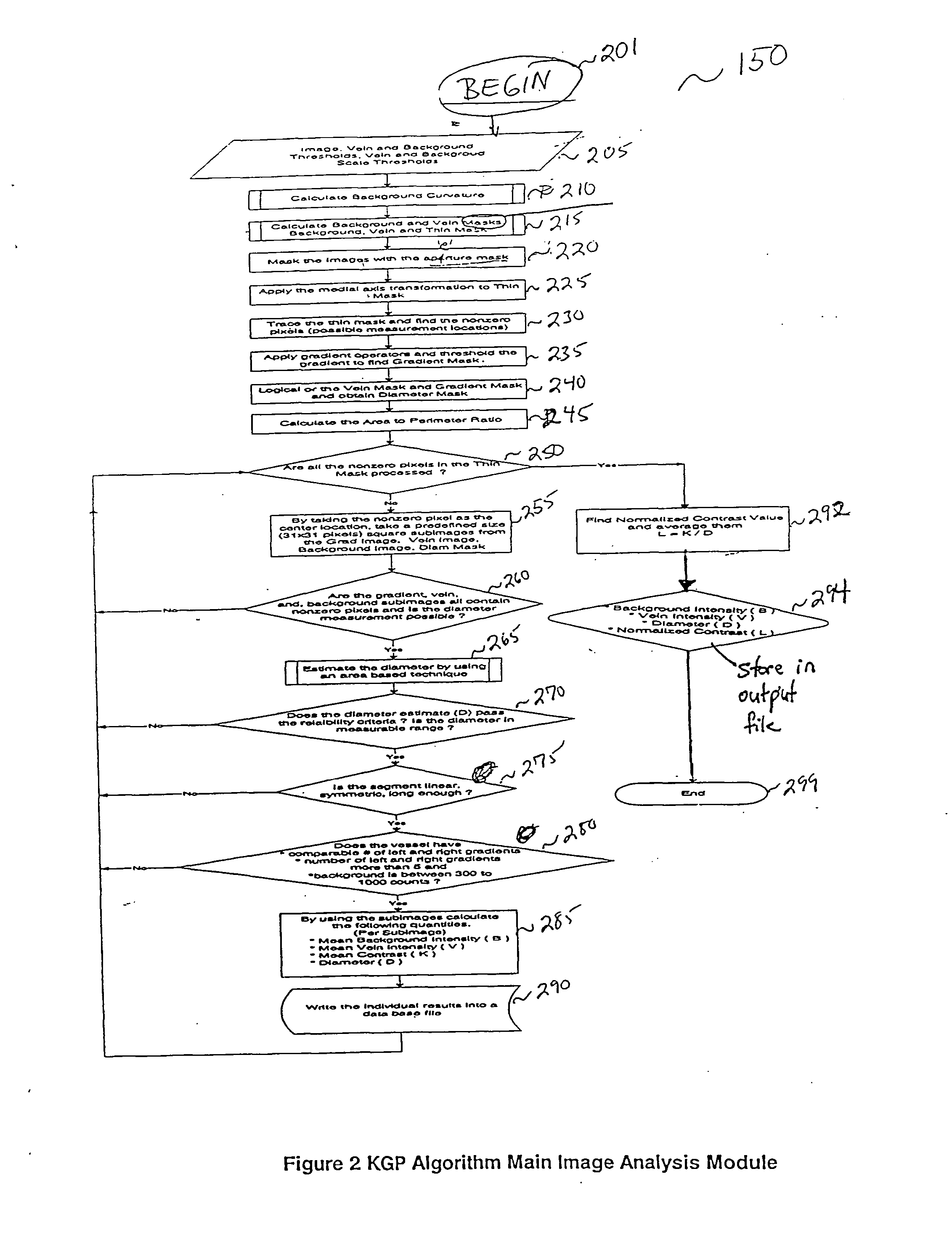System, method and computer program product for measuring blood properties form a spectral image
a technology of spectral image and system, applied in the field of reflected light analysis, can solve the problems of blood escaping into the tissues, the inability of newborn children, especially premature babies, to effectively process bilirubin,
- Summary
- Abstract
- Description
- Claims
- Application Information
AI Technical Summary
Benefits of technology
Problems solved by technology
Method used
Image
Examples
Embodiment Construction
[0051] I. Overview of the Present Invention
[0052] The present invention is directed to a method and apparatus for analysis, particularly non-invasive, in vivo analysis of a subject's vascular system. The in vivo measurements discussed herein can also be performed in vitro by imaging blood in, for example, a tube or flow cell, as would be apparent to a person skilled in the relevant art(s). The in vivo method is carried out by imaging a portion of the subject's vascular system. For example, the image can be created from a sub-surface region of a subject's tissues or organs. The tissue covering the imaged portion must be traversed by light without multiple scattering to obtain a reflected image. In order to form an image, two criteria must be met. First, there must be image contrast resulting from a difference in the optical properties, such as absorption, index of refraction, or scattering characteristics, between the subject to be imaged and its surroundings or background. Second, t...
PUM
 Login to View More
Login to View More Abstract
Description
Claims
Application Information
 Login to View More
Login to View More - R&D
- Intellectual Property
- Life Sciences
- Materials
- Tech Scout
- Unparalleled Data Quality
- Higher Quality Content
- 60% Fewer Hallucinations
Browse by: Latest US Patents, China's latest patents, Technical Efficacy Thesaurus, Application Domain, Technology Topic, Popular Technical Reports.
© 2025 PatSnap. All rights reserved.Legal|Privacy policy|Modern Slavery Act Transparency Statement|Sitemap|About US| Contact US: help@patsnap.com



